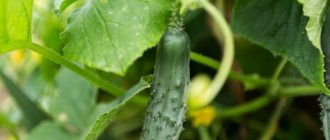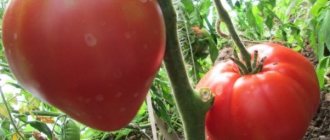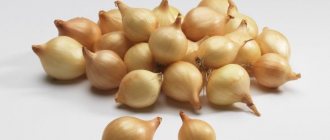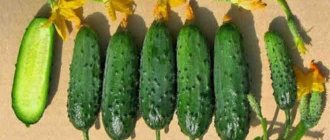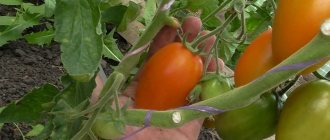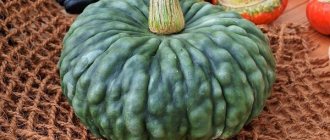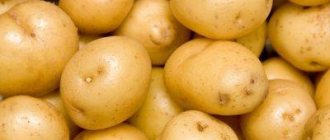Alligator is considered one of the most promising varieties of dill. Many gardeners value it for its high yield and abundant juicy greenery. The culture is unpretentious in care and requires minimal measures during cultivation.
Dill Alligator is late ripening
Alligator dill has a strong aroma
Description of the variety, advantages and disadvantages
The Alligator variety is relatively new, included in the State Register in 2002. It can be grown throughout Russia in personal subsidiary plots and small farms. This variety of dill is late-ripening: if the plants are grown only for greens, then after 42-45 days you can harvest a full harvest; if umbrellas and ripened seeds are needed - after 110-115 days.
Variety characteristics:
- bush compact form;
- height of an adult plant – up to 1.6 m;
- the rosette is large, raised, 30-40 cm high;
- strong foliage;
- the leaves are green, but with a bluish bloom, heavily dissected;
- the aroma is strong;
- medium-sized umbrella;
- yield of bush dill Alligator - 1.45-2.60 kg per 1 sq. m when harvesting greenery and 2.8 kg per 1 sq. m when harvesting at the end of the growing season.
Benefits of Dill Alligator:
- high productivity;
- the leaves do not turn yellow for a long time: when sown in open ground in spring, the greens can be cut off for 25 days in a row;
- the plant is resistant to lodging when watered;
- the crop does not throw out flower stalks for a long time, which is why the Alligator variety can be considered one of the best for growing dill for greens;
- seeds can be sown from very early spring and throughout the whole summer, and in greenhouses - all year round.
No particular disadvantages have been identified in the Alligator variety, except that the cut greens do not have a long shelf life. Since this feature is generally characteristic of dill, it cannot be considered a disadvantage of this particular variety.
Pests and diseases
The alligator is practically not susceptible to the most common diseases of agricultural crops.
- It has average resistance to powdery mildew . May get sick at the end of summer. Plants affected by the disease have a whitish coating on the stems and leaves.
- Most often, the Alligator suffers from fusarium (withering) . The reason may be a temperature difference. To protect the plant, the seeds must be soaked in a solution of potassium permanganate or phytosporin before planting.
- In the rarest cases, the plant may suffer from phomosis . In this case, the plants become covered with brown spots and they dry out. Prevention of this disease will be treating the beds with a solution of Fundazol and spraying the plants with a solution of boric acid twice a season.
Do you know which animals can and cannot be given dill, and what are the pros and cons of the Gribovsky variety, how to grow it and use it in folk medicine, or what is the difference between cumin and dill? The answers to these questions can be found in our articles.
Site preparation
Dill loves the sun, but can grow in partial shade without problems. It can be placed not only in open areas, but also near trees, buildings and fences. For dill of the Alligator variety, grown for leaves, this is even good: in partial shade, its greens will remain juicy and green longer, and flower stalks will not appear longer.
Growing dill begins with preparing the soil in the beds. It is carried out in the fall (preferably) or in the spring.
To prepare the land you need:
- remove from it everything that remains from the previous culture;
- remove weeds;
- dig the area to a depth of at least 30 cm.
The next stage is the application of fertilizers. The leaves of dill are valued, so a lot of humus or nitrogen fertilizers can be added to it. From organic matter, humus from the manure of any domestic animals and birds is added; when applied in the fall, fresh manure can be used. For each square meter, 1-1.5 buckets of organic matter are scattered, to which ash is added in a volume of up to 0.3-0.5 kg per 1 square meter. m. Acidic soils need to be limed, bringing the acidity to a neutral level.
If the preparation of the beds is carried out in the fall, there is no need to break up the clods of earth so that they freeze in the winter. In spring, digging and fertilizing the soil should be done at least 1 week before sowing.
How to care outdoors
Dill Alligator is a very convenient plant; caring for it is not difficult, but it is better to adhere to the basic general rules.
Watering
There is no need to water the seeds immediately after planting; they only need the moisture that remains in the soil after preparing the site.
Subsequently, the plant is watered 1–3 times a week in the daytime or evening, spending approximately 5 liters of water per square meter of planting. Greens are watered at the root; in industrial-scale plantings, drip irrigation is used (water is supplied little by little through special hoses directly to the root of each bush). During the dry period, you need to regularly sprinkle (irrigate) the dill leaves, but this must be done in the morning so that the scorching rays of the sun do not burn the greens.
The frequency of soil moisture is adjusted as the weather changes: in hot weather the number of waterings can reach 2-3 times, in cool and rainy periods no more than once a week.
Covering with film
Alligator is a cold-resistant variety and an adult plant does not need additional shelter. However, if seeds are sown before winter or in very early spring, then it is recommended to cover the beds with seeds before the first shoots appear. Such insulation will somewhat speed up the emergence of sprouts.
Feeding
In general, it is enough to fertilize the soil itself before sowing, according to the scheme described above; the bushes themselves do not need additional fertilizer during the growing season. The exception is when the bushes begin to turn yellow or look sickly. In this case, a 1% solution of mullein or urea is added to the soil once: 5 g per 10 liters of water.
Important! Dill has the ability to accumulate harmful substances from the soil, so abuse of chemicals and drugs should be avoided.
Soil care
It is not necessary to cultivate the area where greenery grows very often.
The care regimen is standard: weeding, loosening, thinning:
- to weed weeds especially carefully only at the first stage of bush growth. Once the plant reaches “adult” size, the presence of weeds is not critical for it and will not cause significant harm. As the leaves grow, weeding is carried out as necessary so as not to clog the space;
- to loosen the soil under planting; this will get rid of small weeds and promote soil aeration. Loose the soil as needed, 1-2 days after watering, carefully, trying not to touch the root system of the bushes, to a depth of 5 cm;
- if the seeds were planted without observing the interval between them, the planting may be very thickened. In such cases, it is necessary to thin out the beds, removing excess shoots and leaving the bushes at a distance of 2 cm from each other.
Sowing in the beds
Dill is an early plant. It can be sown as soon as the snow melts from the beds, but it is better to wait until the soil warms up a little.
You can sow dill of the Alligator variety all spring, but it is advisable to do so before the soil dries out from winter moisture. After this, the beds will have to be watered during sowing. When determining the timing of spring planting, you can be guided by the fact that the optimal temperature for the growth of this plant is about 20 degrees.
Seeds can also be sown in the fall - they tolerate wintering well. In this case, it is important to guess the time correctly: the seeds should not germinate before the cold weather.
Dill seeds are sown in shallow furrows. It is enough to leave a distance between them of 10-15 cm. The seeds are sown in the grooves at intervals of 0.5-1 cm. They are covered with a layer of soil or peat on top. If it is still cold, the soil can be covered with film, and after the shoots appear, remove it.
Dill can be sown not only in a specially allocated bed for it, but also added to early crops. This will allow you to harvest a larger harvest from the same area.
General information about culture
Dill is a green herb belonging to the Apiaceae family; it is a typical annual that grows one central stem from which lateral branches extend. The color of the central shoot is dark emerald, the foliage is feathery, green in color with a blue tint. The length of the foliage can reach 18-22 cm; umbrella inflorescences with many flowers are formed at the ends of the stems. The color of the flowers is yellow. The diameter of umbrellas can reach 17-19 cm.
At the end of the season, small seeds, no larger than 5 mm in size, form in place of the flowers. The plant can spread by self-seeding, but many vegetable growers collect them to plant in subsequent seasons.
It is believed that this spicy plant grew in the Mediterranean countries, as well as in Western Asia, where it was grown in ancient times. And in the Middle Ages, this spice came to Central European countries, from where it gradually migrated to the north. This spicy plant is used to prepare various dishes and decorate them in many restaurants with different cuisines; the prestige of many food establishments increases if customers see that chefs use this greenery to prepare meat and fish dishes.
In Russia, this crop has been cultivated for centuries, but in many Asian countries it can also be found growing wild.
Important! Dill is used not only fresh, but also dried. Also, when pickling or pickling vegetables, flowers or seeds of this spicy plant are used.
Many people believe that dill is presented in a single form, but in fact there are many varieties of it, differing in terms of ripening, appearance and shape of the leaves.
This article talks about Alligator dill, a description of which is presented below.
Caring for the crop during cultivation
Dill is not one of the garden crops that is difficult to grow. However, it also has its own characteristics that gardeners need to know about so that the plants grow correctly and produce a good harvest of greens or seeds.
Watering
Dill as a green crop requires a lot of water. Watering should be carried out so that the soil is always slightly damp. In hot weather, irrigation is necessary. Before germination, it is most convenient to water the beds using a watering can with a nozzle, so as not to wash away the seeds.
Top dressing
There is no need to fertilize dill grown for green mass if fertilizers were applied before sowing. You can feed the plants if a deficiency of any element is detected. Complex fertilizers containing mineral elements are well suited for such feeding.
Dill is fed for seeds before flowering. You can fertilize the beds with saltpeter or urea with a small amount of potassium and phosphorus mixtures. For greens, it is enough to dilute 1 tbsp. l. nitrogen fertilizers in 1 bucket of water.
From organic matter, you can use an infusion of slurry (1 to 10). It needs to be left for 2-3 days, diluted again in proportions of 1 to 10, add 0.5 cups of ash to a bucket and water the beds.
Loosening and weeding
Weeds can greatly inhibit dill, so weeding is necessary. Particular care must be taken to ensure that there are no weeds at the beginning of plant growth.
Loosening will make the soil breathable, which will also benefit the plants.
Disease and pest control
Dill Alligator has fairly good resistance to diseases and pests. Of the latter, aphids are the most common. You can fight it by spraying plants with tobacco, ash or garlic infusion. It is undesirable to use chemicals: many products have a rather long shelf life, which makes it impossible to eat greens.
Growing Dill Alligator
The variety loves moisture very much, so regular watering is one of the most important nuances of growing.
In addition to watering, fertilizing plays an important role. It is especially worth paying attention to potassium-phosphorus and nitrogen fertilizers. This will prevent yellowing from appearing on the dill branches. But too many of these components will not be beneficial, since the plant has the ability to absorb chemicals.
During the growing process, it is necessary to regularly remove weeds.
Collecting greens is simple: due to the large size of the bushes, you can safely cut off all the greens, leaving 2 - 3 branches for the further development of the plant. You can learn more about planting and growing Alligator dill from the video:
Harvest and storage
You can cut the greens when they reach a height of 10 cm. If the plants are sown densely, then the easiest way is to pull out the excess leaves or tear off the lower leaves, leaving the middle to grow.
There is no need to rush to cut the dill. Experienced gardeners have noticed that it acquires its characteristic aroma only when the first 4-5 leaves appear. The older the plant is, the more fragrant it will be.
Fresh green dill should be stored in the refrigerator. It has a short shelf life - no more than 1 week. Excess greens can be dried, salted, frozen, or added to canned foods.
Plants from which seeds are needed are removed after they are fully ripe. This occurs after the end of the growing season, which can be determined by yellowed and shriveled leaves and darkened umbrellas. The readiness of the seeds is also determined simply: you need to pick the umbrella, and if the seeds fall off easily, then they are already ripe. After cleaning, they must be dried thoroughly. To do this, dill plants must be uprooted or cut above the ground and placed to dry in partial shade.
Dry seeds should be stored in small jars, plastic food containers or linen bags. During storage they should be kept in a dark and dry place. The seeds can be used for cooking as long as they retain the smell; for sowing – 2-3 years (it is better to take last year’s seeds, which have the highest germination rate).
Video review of the Alligator variety, see the following video:
It is not difficult to sow and grow dill of the Alligator variety. All it requires is proper planting, timely watering, fertilizing and loosening. To regularly obtain fresh greens, you can sow seeds every 2-3 weeks from the beginning of spring warmth until the end of summer.
0
0
Copy link
Landing Features
“Alligator” is a cold-resistant plant that can withstand temperatures down to -5˚C.
The culture feels best at 17-19˚C.
Sowing time
Planting seeds in open ground is permissible from spring to late autumn. If the purpose of cultivation is to obtain complete planting material, the fruits are sown immediately after the snow cover melts.
For this variety, planting “before winter” is allowed. The optimal time for the autumn procedure is early November. After the first frost the soil becomes hard. In such soil, swelling of seeds is excluded. If you sow earlier, sprouts may appear that will die with the onset of winter. 3-4 weeks before the expected date, add the following to the soil:
- humus or compost;
- superphosphate;
- potassium salt.
Fertilizers for dill
The last two components are added according to the instructions. After fertilizing the future bed, the top layer of soil is dug up to a depth of no more than 10-12 cm.
Selecting a location
Dill "alligator" is an unpretentious plant. An open place well lit by the sun is suitable for planting it. With strong shading, the leaves of the crop turn pale and develop poorly. If there are enough rays, the green mass acquires a rich emerald hue. The optimal length of daylight for the “alligator” variety is 11-12 hours.
Since tall plantings will obscure the bed with young dill shoots, low-growing plants should be placed next to it. Optimal neighbors would be cabbage, onions, and garlic. The best predecessors for the crop are cucumbers, legumes, and tomatoes.
Dill beds
Soil requirements
It is preferable to plant dill “alligator” in light loamy or sandy loam soil. The plant develops well on black soil. An important condition is the acidity of the substrate. The pH level should not be lower than 6.3.
It is not recommended to place beds in low-lying areas. The culture is quite moisture-loving, but stagnation of water at the roots can negatively affect its well-being. Therefore, the soil must drain well.
Preparing and sowing seeds
Planting material retains high germination capacity for no more than 3-4 years: this should be taken into account when planning sowing. By sowing “old” seeds, the rate is increased. The seeds can be buried in the substrate and dry, but they will germinate only after 18-20 days. The essential oils contained inside will prevent germination. Therefore, it is better to use soaking, which can significantly speed up the process.
Dill seeds
The procedure consists of several stages:
- Dill seeds are washed.
- The planting material is laid out on the bottom of the container in a thin layer and filled with a small amount of water at room temperature.
- After 15-20 minutes, add more liquid, as it is quickly absorbed.
- Every 8-12 hours the water is renewed, while gently mixing the seeds.
After 2 days, the planting material is removed and slightly dried (until flowability appears). After this, sowing can be done. Soaked seeds germinate 6-8 days earlier than those planted dry.
Before sowing, the soil in the garden bed is harrowed with a metal rake with fine teeth. Then rows are formed in the garden using any pointed object (wooden peg, etc.). The depth of each should be 2 - 2.5 cm. A distance of 20-25 cm is maintained between adjacent furrows. The rows are lightly watered and seeds are placed on them, which are then sprinkled with dry soil.
During autumn planting, watering is not carried out.
Some gardeners prefer a carpet pattern. With this method, planting material is scattered over the surface of the selected area, after which it is embedded into the soil using a rake. Then the soil is moistened by placing a scattering nozzle on the watering can.
Reviews
Irina
I sowed dill of this type several years ago. I liked the result. The main thing is to plant correctly and do not forget about watering. Germination was excellent; sprouts appeared on the third day. I planted it for greenery 4 times a season. I used it for pickling vegetables, and dried the umbrellas, ground them in a coffee grinder and added them to food. It turned out to be a very aromatic spice!
Basil
For the third year now we have been buying the Alligator variety. It grows here all the time: in the summer in the garden, and in winter in small greenhouses. The plants hardly get sick and have a pleasant rich smell. We treat cultivation very responsibly, since dill is very useful. Basically, we add it to dishes and use it for preservation in the summer.
Variety Dill
Dill is the result of the work of Dutch breeders and has gained well-deserved popularity among gardeners around the world thanks to its lush and fragrant greenery. Easy to care for, grows in any conditions, produces a large number of leaves. The bushes reach one and a half meters in height, the greens are universal in use and can be used in any form, including for canning and long-term storage. Can be used as decorative greenery.
All the described varieties of fragrant greens are adapted to the conditions of the Russian climate and are suitable for mass cultivation.
xn—-8sbpahw2al5bza9c.xn--p1ai
The best varieties of dill are distinguished by their taste, good green yield, resistance to various diseases and floweriness. Tasty and aromatic dill can be grown if you choose the right variety and have enough information. Unfortunately, not every variety of dill can boast of good yield and excellent taste.
Advantages and disadvantages
Alligator is a very popular type of dill for sowing, as it has a number of positive features:
- the crop is harvested several times per season;
- a lot of thick aromatic greens;
- unpretentiousness;
- high yield - up to 1.5 kg per m2;
- resistance to temperature changes;
- rarely affected by diseases and pests.
Variety Aurora
Aurora is a new selection variety and is distinguished by the super-early appearance of greenery - already on the 25th day after planting. Aurora bushes are distinguished by rosettes of raised, thick, bright, fragrant leaves and close internodes of the stem. Aurora has good yield, is resistant to diseases and insects, and can be sown before winter.
Medium ripe varieties begin to form leaf mass several (up to 10) days later than early ones, so a larger number of leaves are formed on the stems. During the growing season, a sufficient number of umbrellas and seeds suitable for processing are also formed.
Use in folk medicine
Dill Alligator has a diuretic, antioxidant, bactericidal, choleretic, and antiseptic effect on the human body. Dill helps remove toxins and improves overall health .
If dill is regularly included in a person’s diet, then this green:
- improves metabolism;
- accelerates the production of enzymes and gastric juice necessary for the stomach;
- normalizes the functioning of the gastrointestinal tract;
- useful for colitis and gastritis.
Alligator dill also has a calming effect on the human body - it reduces irritability, headaches and nervous tension. The diuretic properties of dill, with systematic use and use of extracts from the plant, free the body from excess fluid and swelling. Alligator dill seeds and the greens themselves will also help with bad breath. Dill destroys pathogenic microflora in the oral cavity.
Are asparagus and asparagus the same thing? Are there any differences between ornamental varieties and edible ones?
Variety Dalniy
Dalniy dill is universal and is perfect for use as an early spring herb, adding to marinades, and preparing for future use (drying and freezing). The plant is highly valued by gardeners for its high yield, resistance to lodging, and rapid leaf formation. 38 days after sowing, a semi-raised rosette with a medium-sized leaf and a height of up to a quarter of a meter is formed. The leaves are covered with a thin waxy coating. The distant variety is resistant to pests and diseases.

